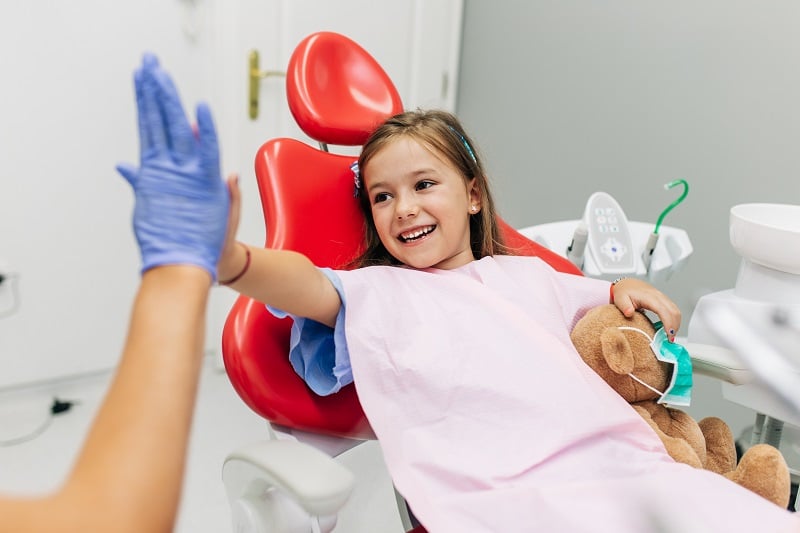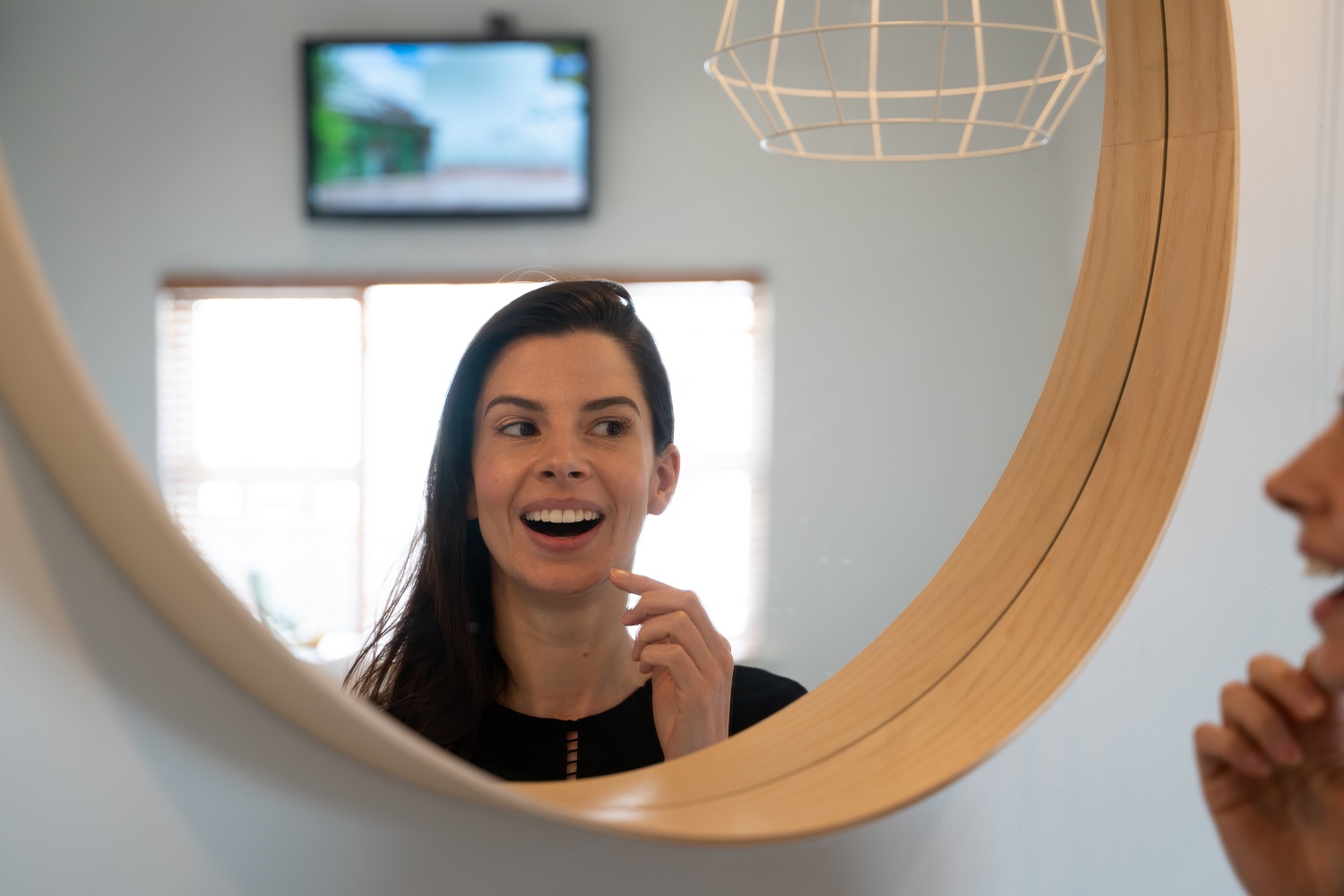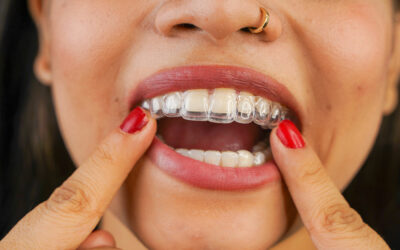Do you dread going to the dentist?
Dental phobia — fear of going to the dentist — affects more people than you might realise. One study found that as many as 1 in 10 children and adults in Australia experience high dental fear.
What Are the Signs and Symptoms of Dental Anxiety?
Dental anxiety is often characterised by symptoms such as:
- Sweating
- Sitting on the edge of the chair
- Racing heartbeat (tachycardia) or palpitations
- Withdrawal, or using humour or aggression as an attempt to cover up the anxiety
- Visible distress, signs of panic, or crying
- Low blood pressure and possible fainting (syncope)
- Pacing around the waiting room
- Fidgeting
What Are the Causes of Dental Anxiety and Phobia?
Dental anxiety can be caused by:
- Feeling that the mouth is personal space and feeling like this personal space is being invaded
- Prior trauma to the neck or head
- A traumatic dental or healthcare experience
- Past trauma such as abuse
- Depression, post traumatic stress disorder, or anxiety
- Fear of loss of control
- Trust issues
- Obsessive compulsive disorder
What Are the Consequences?
Being fearful of the dentist can result in a variety of negative consequences.
Individuals with a high fear of the dentist are more likely to avoid or delay dental checkups, putting the individual at risk of dental issues and poor oral health.
Regular dental check-ups are crucial for recognising early signs of oral health problems. Catching an issue early allows for prompt — and potentially easier — treatment.
Avoiding the dentist can lead to greater problems down the road that require more time and effort to treat. This creates a cycle of dental anxiety. Fortunately, there are effective ways to manage dental anxiety and break this cycle.
How To Ease Dental Anxiety
If you are eager to work through your dental anxiety and take control of your oral health, we have compiled some tips and strategies for coping with your fear.
1. Talk With Your Dentist
Dentists are familiar with dealing with nervous patients and know how to recognise dental anxiety. There is absolutely no need to feel embarrassed when expressing your dental fears. It is crucial to talk openly and honestly with your dentist about your fears.
By mentioning your specific worries, your dentist can tailor your visit as much as possible and help ease your fears.
Your dentist may also suggest specific coping strategies to help ensure your comfort and minimise anxiety.
2. Use Distractions

A popular method for working through dental anxiety is the power of distraction. This method is suitable for both children and adults alike.
Many dentists utilise a number of different distraction tools such as televisions, books, music, movies, children’s toys (as shown in the image) and other visual or audio stimuli.
Evidence suggests that by focusing on visual and audio stimuli, this can help ease mild to moderate dental anxiety for most patients.
You can also check with your dentist if you can bring your own music to listen to. This can be a soothing, effective way of blocking out any sounds that make you uncomfortable.
3. Practise Relaxation Techniques
Many individuals with dental anxiety have found relief in the form of relaxation exercises that help reduce muscle tension and their heart rate.
Various breathing techniques and progressive muscle relaxation techniques can be taught right at the dental clinic and practised at home by the patient before a dental appointment. Relaxed breathing has been shown to be effective in making anxious individuals more comfortable.
There is a range of techniques when it comes to paced breathing, but here is a simple overview:
- Take slow, deep breaths
- After holding each breath for approximately 5 seconds, exhale slowly
- Continue slow, deliberate, steady breathing for 2 to 4 minutes
4. Systematic Desensitisation
Systematic desensitisation is a method where a fearful patient is gradually exposed to the aspect of dentistry that frightens them the most. During the exposure, the patient is encouraged to use relaxation strategies to cope with their anxiety.
A program known as CARL (Computer-Assisted Relaxation Learning) was developed to systematise the exposure process and help reduce fear surrounding dentistry.
5. Ask for Explanations
Predictability, control, and trust are all important for reducing the uncertainty sometimes felt during a procedure.
A popular way of establishing predictability, increasing control, and enhancing trust is the ‘tell–show–do’ technique.
The ‘tell-show-do’ method involves an explanation of what is going to happen during the procedure, what instruments and tools will be used, and reasons for the procedure itself. These steps constitute the ‘tell’ phase.
The ‘show’ phase involves a demonstration of the procedure. Lastly, the ‘do’ phase occurs when the process is carried out.
6. Take Rest Breaks

Rest breaks can be a helpful tool for easing dental anxiety. Either the dentist or the patient should be able to initiate breaks during the procedure.
For patients with dental fear, they may reach a point where they are desperate for a break or feel they cannot take it any longer.
Without a the option to take a break, a patient can become so worked up that the procedure may have to be stopped entirely.
With the possibility of a rest break, a patient can initiate a pause in treatment and gain a sense of comfort and control.
7. Agree on a Signal
It can be highly comforting to have a signal — that you establish and agree upon beforehand — between yourself and the dentist or hygienist. The signal could be something as simple as raising your hand to let the practitioner know you need a break from the procedure.
Having a signal helps increase your sense of control and increase the level of trust between yourself and the practitioner.
8. Ask About Dental Sedation
For severe cases of dental anxiety and when other relaxation approaches have failed, it may be time to consider asking your dentist about sedation for dental anxiety.
Depending on the type of sedation chosen, there may be side-effects such as drowsiness that may have an impact on recovery time. Your dentist will thoroughly explain these risks so you can make an informed decision.
There are three common types of conscious sedation:
- Inhalation sedation (also referred to as nitrous oxide or ‘happy gas’)
- Oral sedation (primarily through the use of benzodiazepines such as Xanax or Valium)
- Intravenous (IV) sedation
For more severe cases, general anaesthesia can be used, but it involves increased risks.
Ready to Conquer Your Dental Fears?
We hope this guide to easing dental anxiety has given you some helpful tips.
Contact our skilled team of experts if you would like to set up an appointment — or simply just ask some questions — to start working through your dental anxiety and regaining control of your oral health.







